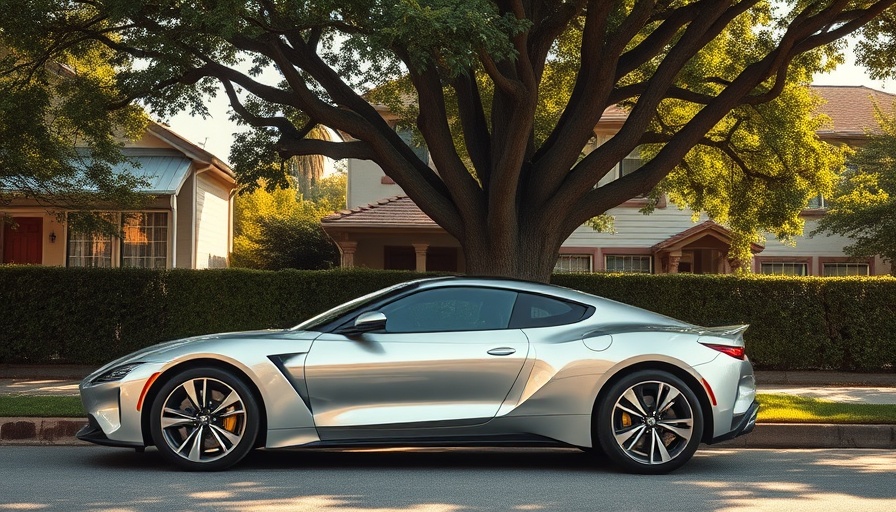
The Hybrids Leading the Charge in Driving Range
In an era where sustainable driving is more than just a trend, hybrid vehicles embody the balance between performance and environmental responsibility. Notably, these vehicles enhance the efficiency of traditional internal combustion engines by integrating electric motors. Their capabilities can significantly affect the driving experience, especially in terms of fuel efficiency and overall range.
Known for their smart engineering, hybrids can be primarily classified into two categories: full hybrids and mild hybrids. Full hybrids can run solely on electric power without engaging the engine, while mild hybrids depend on the internal combustion engine with limited electricity assistance. This distinction is crucial as it influences both performance features and driving ranges.
Top EPA-Rated Hybrids: Fuel Efficiency Champions
Based on the Environmental Protection Agency's metrics, the driving ranges of hybrids can vary dramatically. According to data compiled from reliable sources like manufacturer websites and Edmunds, here’s a look at some of the hybrids with the highest EPA-rated ranges:
-
2025 Lexus LC 500h
EPA Estimated Range: 644 miles
Features: 3.5L V6 Hybrid engine, Rear-Wheel Drive, and a fuel economy rating of 26 City / 33 Highway MPG. -
Toyota Highlander Hybrid
Known for its family-friendly features and reliability offering a solid driving range.
Low-End Performers: Hybrids with Limited Range
Conversely, not all hybrids stand out in the fuel range department. Understanding which models falter is as essential as knowing the top performers. These models tend to utilize technology that doesn't extend maximum range, often reflecting a balance skewed towards price and initial purchasing appeal rather than long-term performance:
-
Ford Fusion Hybrid
Compact and efficient, but reports show its EPA range trailing behind competitors. -
Chevrolet Malibu Hybrid
Although it offers some great tech features, its range limits performance for long-distance travels.
Comparing Performance: The Hybrid Advantage
When analyzing hybrid models, one cannot ignore the advanced technology enabling hybrids to balance necessary engine performance while optimizing fuel efficiency. Various variables like acceleration times, handling, and technological features should be weighed against fuel economy ratings to provide a comprehensive picture of a hybrid's capabilities.
The Future of Hybrid Technology: Trends and Predictions
As hybrid technology continues to evolve, we are witnessing an increase in electric-only driving capabilities alongside better fuel efficiency in traditional engines. As manufacturers focus on eco-friendly solutions, we can anticipate innovations in battery technologies and alternative fuel sources—fuels that may redefine how we perceive energy-saving vehicles.
Understanding the Market: The Hybrid Vehicle Landscape
The hybrid market is booming, and consumers are presented with more choices than ever before. As potential buyers, analyzing hybrid car pros and cons can aid in making informed decisions. Not only do they provide benefits in fuel economy, but hybrid vehicles also often boast low emissions, making them attractive options in urban settings.
Common Misconceptions: Debunking Hybrid Myths
Despite growing popularity, misconceptions abound in the hybrid conversation. Many consumers harbor doubts about the reliability and maintenance costs associated with hybrid vehicles. However, studies reveal that when properly maintained, hybrids can present an economic advantage over time due to lowered fuel consumption and repair costs.
Conclusion: Making Informed Decisions for Eco-Friendly Driving
Ultimately, understanding the distinctions within hybrid vehicles promotes smarter purchasing decisions. By dissecting performance metrics and reliability ratings, consumers can find the best value cars that align with their driving habits and environmental considerations. In a landscape defined by rapid technological advancements, staying informed is the key to navigating the hybrid market successfully.
 Add Row
Add Row  Add
Add 




Write A Comment